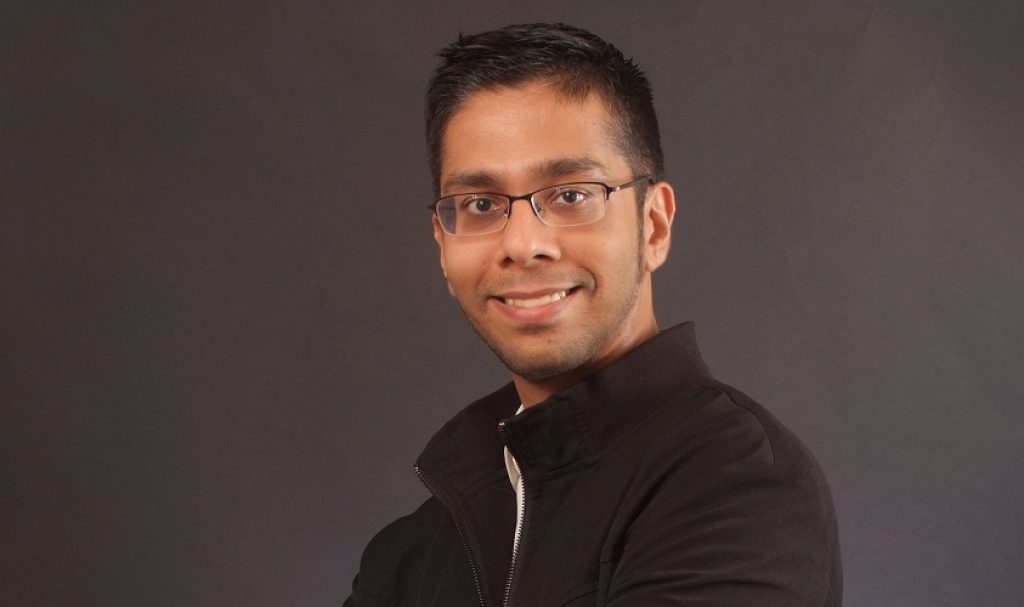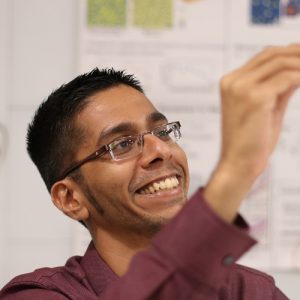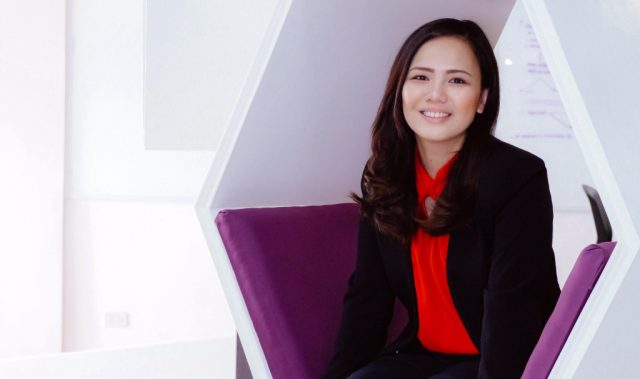
Anjan Soumyanarayanan
Senior Scientist, Institute of Materials Research and Engineering, A*STAR
Assistant Professor of Physics, National University of Singapore
Singapore
AsianScientist (Oct. 11, 2019) – Magnetic skyrmions—they sound like something right out of a science fiction movie, but in fact they refer to nanoscale arrangements of electron spins which behave as individual magnetic particles. Skyrmions were predicted to exist more than five decades ago, in 1962, but only recently have scientists been able to generate them by developing novel magnetic materials. However, controlling the properties of these skyrmions remains a tricky problem.
The payoff for creating tunable magnetic skyrmions could be enormous. Applied to logic and memory devices, they may boost computing speeds and capacities in an energy-efficient manner. Helping to realize the potential of magnetic skyrmions is Anjan Soumyanarayanan, Senior Scientist at the A*STAR Institute of Materials Research and Engineering and Assistant Professor of Physics at the National University of Singapore.
Soumyanarayanan and his team devised a method to tailor magnetic interactions in multilayered films comprising stacks of atomically thin metallic layers with atomically sharp interfaces. This technique granted them precise control over the properties of skyrmions, such as size, density and stability. Importantly, the fabrication method is readily integrated with existing microchip manufacturing workflows, which reduces the hurdles for industry adoption.
For spearheading this research, Soumyanarayanan was the sole recipient of the 2018 Institute of Electrical and Electronics Engineers (IEEE) Magnetics Society Early Career Award, and was also conferred the Young Scientist Award at the 2018 President’s Science and Technology Awards in Singapore. In this interview with Asian Scientist Magazine, he speaks candidly about his research journey and his future ambitions.
- How would you summarize your research in a tweet?
We aim to harness novel quantum and topological properties at surfaces and interfaces of atomically thin materials for next-generation nanoelectronics.
- Describe a completed research project that you are most proud of.
I’d like to highlight the work wherein we realized tunable magnetic skyrmions by developing a novel thin film material platform, completed in 2017. Although skyrmions had been discovered in thin films a year before our work, the community had yet to develop materials in which the properties of skyrmions could be reliably controlled.
The main obstacle was in achieving control over the parent interaction for skyrmions—known as the Dzyaloshinskii-Moriya interaction (DMI). While DMI is known to arise at the interface of a heavy metal and a ferromagnet, strategies to enhance it weren’t established.
Our hunch was to incorporate two interfaces in our thin films—cobalt-platinum and iron-iridium. To deposit such a film, we used an established technique called magnetron sputtering, which allowed us to stack these metals layer-by-layer into multilayers. A crucial factor behind our successful creation of this multilayer was the use of industry-style design of experiment methods to determine optimal growth conditions.
Eventually we were able to achieve DMI values 50 percent larger than conventional multilayers and could vary it with layer thickness. This allowed us to tune the sizes of skyrmions by a factor of four—down to 25 nanometers—and densities by a factor of ten. Such a thin film platform could in principle be used to achieve application-specific skyrmion sizes and densities, paving the way for skyrmion-based electronic technologies.
Another reason I’m proud of this work is that its fruition relied as much on my PhD training in quantitative microscopy and electrical measurements, as it did my materials science skillset acquired post-PhD at A*STAR since 2013.
Moreover, there were challenges beyond just execution, especially in coordinating the work across scientists from various engineering and science backgrounds. It was a rather large and interdisciplinary project, and I’m happy that it turned out successful.
- What do you hope to accomplish with your research in the next decade?
Skyrmions, and related spin-based approaches, have great potential for developing next-generation computing technologies. One particular application of interest is to realize neuromorphic computing, wherein we try to mimic the behavior of the human brain.
Our brain is an incredibly efficient computer. It uses only 20 watts of power, 5-10 times less than your average computer, while providing vastly superior capabilities in recognition, pattern-matching and decision-making.
Achieving brain-like computing capabilities, or energy-efficient artificial intelligence (AI), has applications in monitoring, fault recognition and intervention across domains, including manufacturing, surveillance and healthcare.
Right now, AI development is mainly software-driven, and progress is limited by existing hardware. One reason is that, unlike the brain, present-day computers have separated the capabilities of information storage, or “memory,” and decision-making, or “logic.”
Skyrmions and other spin-based solutions could be used to integrate memory and logic and drive the development of AI technologies from the hardware side. This could enable real-time cognition and decision-making with greatly reduced energy consumption. This would be the goal for 10-15 years.
- Who (or what) motivated you to go into your field of study?
I’ve been fascinated by the synergy between experimental physics and mathematical models since childhood. Over time, I found quantum and statistical physics to be useful tools for investigating the electronic properties of materials.
More recently, I was exposed to industry-friendly materials growth techniques which enable us to tweak quantum interactions governing ambient electronic properties. This meant that the processes I had developed in the lab could be taken to a foundry to be scaled up without too much effort.
To sum it up, I was inspired to go into this area of work to translate my physics training to develop real electronic materials. Today, I am inspired by the potential of technological outcomes from my work which could benefit Singapore in due course.
- What has been the biggest adversity that you experienced in your research?
One particularly memorable challenge surfaced in the fifth year of my PhD. We had home-built a scanning probe microscope to image atoms, which unfortunately wasn’t working well. I had spent six painful months trying to debug a source of noise that was interfering with our experiments. On Christmas Eve 2010, exhausted and frustrated, I met my supervisor, who suggested that I revisit my thesis directions in order to graduate.
It was a sink-or-swim moment. I decided to push on, but took a step back and came up with a more systematic strategy to eliminate all possible noise sources. Within six days I had identified the bad apple—a loose sample holder clamp, which allowed my samples to shake inside the microscope. By the time I left for a late winter vacation, incidentally to get married, my microscope was producing beautiful data. The microscope turned into a prolific teammate for the home stretch of my PhD.
- What are the biggest challenges facing the academic research community today, and how can we fix them?
Modern science is hyper-specialized, and scientists train increasingly longer to establish technical expertise in their disciplines. As a result, it is it much harder to talk to people outside your research sub-domain. This in turn reduces trust between scientists and between different research communities. Scientific ego issues also emerge, which further hurt trust and collaboration.
And yet, many of the problems facing society today require deep tech solutions, and importantly, strong collaboration within and across disciplines. So I think our biggest challenge today is how to inspire and incentivize openness, collaboration and trust between scientists.
There is hope, given recent efforts to incentivize trust and collaboration. For example, to increase trust, many journals are coming up with more open systems of peer review. Meanwhile, global research funding is increasingly being structured around multi-principal investigator programs which, often require scientists to build interdisciplinary collaborations.
- If you had not become a scientist, what would you have done instead?
I’ve a strong analytical bent, so I would probably have pursued economics or policymaking.
- Outside of work, what do you do to relax?
As a scientist, it’s hard to “switch off” outside work because what drives me is an innate desire to fix things that are broken. Sometimes this leads me to even fix things that aren’t broken—even at home!
That said, exercise and mindfulness practices are valuable resources to “tune out” and relax, especially of late. In my spare time, I also enjoy reading, watching comedy, sports and traveling.
- If you had the power and resources to eradicate any world problem using your research, which one would you solve?
In my view, the biggest problem facing the world today is the combined challenge of the energy crisis and climate change. The energy-climate crisis is unique because it is, to a great extent, irreversible. It threatens our very existence, and we have very little time to fix it.
I hope to address some aspects of this crisis with longer-term applications of my research. For example, reducing the carbon footprint of large-scale computing could be possible with energy efficient computing Similarly, climate research and related risk mitigation may require devices with monitoring and real-time decision-making capabilities.
- What advice would you give to aspiring researchers in Asia?
Asia is increasingly an excellent place to learn and to do impactful science. The resources we have—talent, infrastructure, long-term investments and so on—together with stable political leadership, puts us on par, if not ahead of what exists in the West at present. So I would advise aspiring researchers to look within Asia, rather than outside Asia, both for learning new skillsets and for establishing themselves to solve the challenging and impactful problems that face the world today.


This article is from a monthly series called Asia’s Rising Scientists. Click here to read other articles in the series.
———
Copyright: Asian Scientist Magazine; Photos: Anjan Soumyanarayanan.
Disclaimer: This article does not necessarily reflect the views of AsianScientist or its staff.













